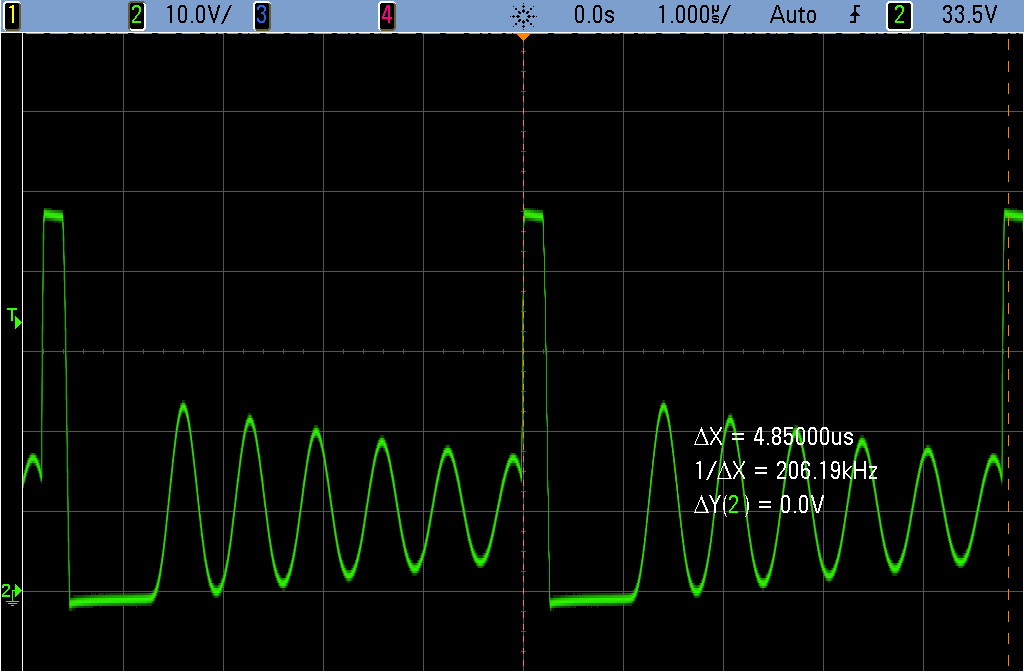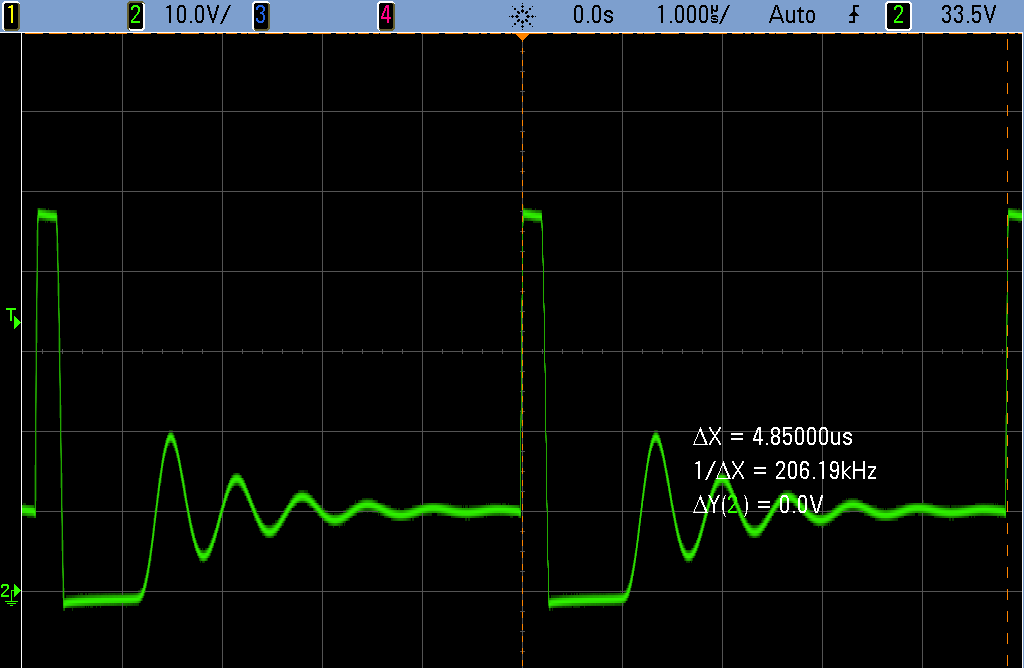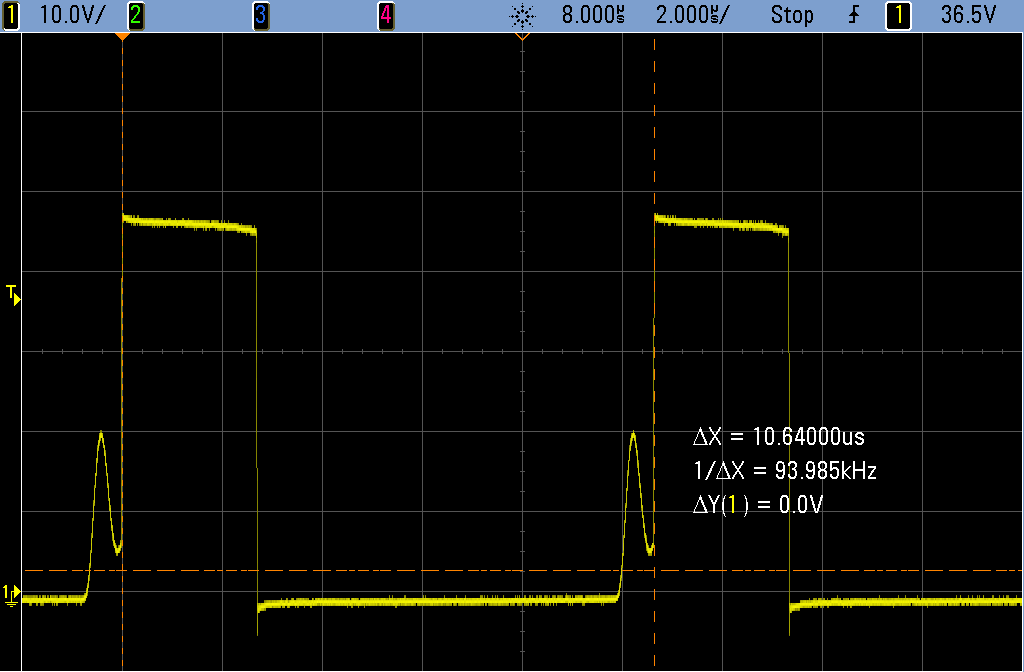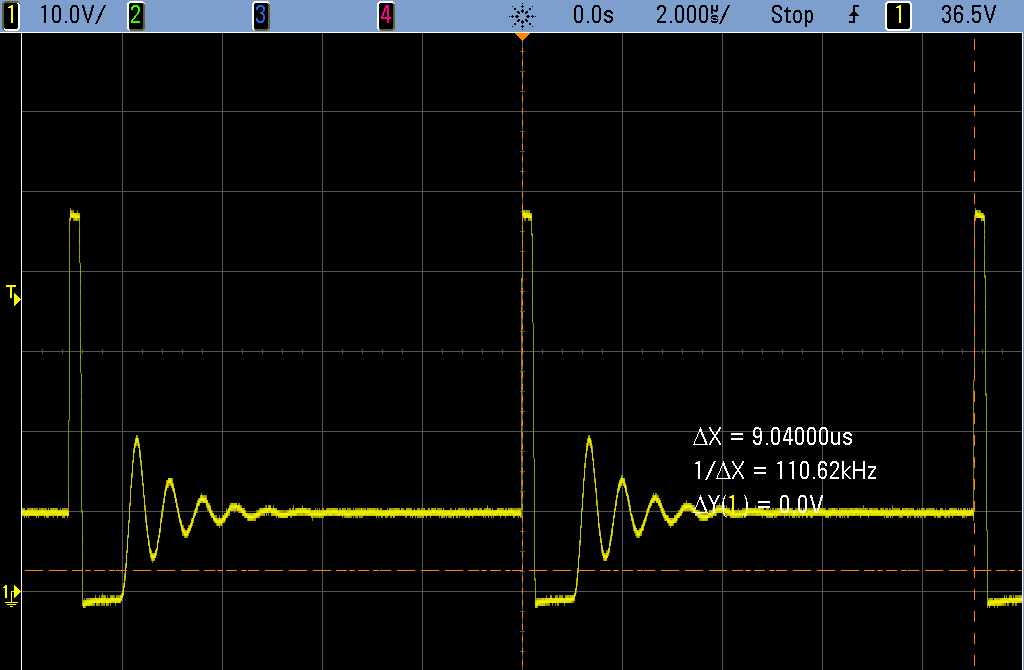Other Parts Discussed in Thread: TPS92515
Hello,
I have some troubles using analog dimming with TPS92515HV.
I use datasheet schematic:
Where I use:
Vin=48V
LED is 12V 1A (used with 550mA)
C6=470pF
D4=MMSD4148T1G (100V, 200mA)
D1= Schottky SS2FH10
R5=0,37ohm (to have 550mA on LED)
PWM tied to Vcc
Iadj used with analog input (0-2,5V)
the problem is that at minimum light (Iadj=0) I'm not able to set low current on LED. On datasheet is reported that analog dimming ratio should be 200:1, I make lot of test but lower current that I can see is 9mA (about 50:1 because maximum current on LED is 550mA)
I try a lot of configurations, here I report some results:
L1=100uH and Roff=27kohm --> LED current is 26-550mA, Fsw=540-633kHz
L1=100uH and Roff=47kohm --> LED current is 18-550mA, Fsw=312-374kHz
L1=47uH and Roff=25kohm --> LED current is 41-490mA, Fsw=664kHz
L1=270uH and Roff=57kohm --> LED current is 9-560mA (don't remeber Fsw, I think about 370kHz)
Best result is using big L1 but I have no space to use L1>100uH (maybe i can find 120 or 150uH).
Another problem is that when I have a small current I have a bad waveform on inductor input: I can see sinewave before pulse. I can reduce sine wave incrementing Roff but minimum current on LED increases (because is increasing also Fsw).
Here is a picture of waveform that I can find on inductor using L1=270uH and Roff=57kohm:
Do you have some suggestion to improve analog dimming?
thank you a lot








